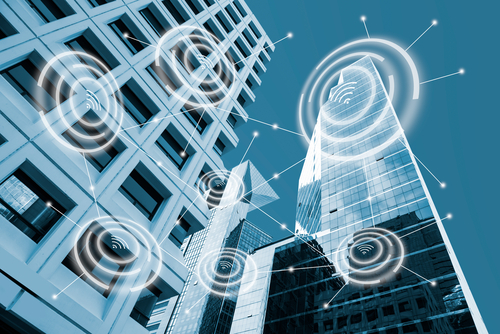The success of any business relies on maintaining good facilities and equipment. Many businesses have acknowledged the evolution of facilities management in recent years, as capabilities have drastically improved with recent technology trends. From monitoring the status of heavy equipment on a mobile app to gaining building access control using wearable technology, the future of facilities management has officially arrived.

Improving a company’s facilities management approach starts with understanding all of your facility’s current needs—and anticipating ones to come. From there, you can tap in to the exciting trends in the facilities management space to improve operations and create a more sustainable, cost-effective, and safer workplace.
Without further ado, here are five tech essentials for facilities management in growing businesses:
Modern Machine Learning
Machine learning, or ML, uses data for predictive analysis to help businesses make accurate predictions based on previous actions. ML can collect, store, and analyze data sets in seconds and encourage facilities leaders to be more proactive regarding asset performance management.
A machine-learning system will automatically send an update if it detects a potential issue with a property or a piece of equipment, which can help you neutralize the threat before it becomes a bigger problem. Facebook and IBM are just two examples of forward-thinking companies that use advanced machine learning technologies to their advantage. Organizations that tap into the capabilities of modern machine learning are able to acknowledge trends and patterns that will enhance the business decision-making process for facilities managers.
Adequate Space Planning
Space management centers around optimizing occupancy and minimizing cost—a tricky assignment in the aftermath of the pandemic. Effective space management has always required a lot of considerations in the quest to improve overall space utilization and promote safety. Done well, this helps facilities managers to create the best working experience for employees.
Technology is helping make this process easier. Space-management software uses data and analytics to study how floor plans are experienced by employees. To further ensure safety and cut costs, businesses have adopted space-management strategies such as hot-desking and desk booking. These strategies have been proven to improve space usage while maintaining employee safety. Businesses can expect an increase in the adoption of similar types of tools and software by offices for efficient space management in the coming months and years.
Wearable Technologies
In this digital age of smartwatches and fitness bands, wearable technology is expected to continue revolutionizing the business world. Smart badges can now be used for security and building access control purposes. Also, facilities managers can collect data on employees’ work patterns, space occupancy, and utilization by encouraging the use of wearable technologies by coworkers and colleagues.
Perhaps best of all, wearable technology can help detail-oriented facilities managers to stay connected, even when they’re on the go. Everything is trackable via mobile apps, which means facilities managers can always be in the know.
Touchless Technology for Workplaces
McKinsey research finds that reducing interaction with high-touch surfaces like doorknobs, elevator buttons, check-in kiosks, etc., reduces the health hazards to staff, customers, and the organization as a whole. Workplace leaders increasingly believe touchless technology is the best way to overcome post-pandemic inhibitions.
To be sure, recent global health events have completely altered the understanding of what makes a workplace safe. More companies will implement touchless workplace technologies to guarantee employee safety from now on. Doors that open automatically, contactless flushing and hand-drying in the restroom, and improvements to a building’s cafeteria or break room are just a few of the innovations that will soon be commonplace in offices around the world.
Smart Building Technologies
Utilizing data-driven solutions to enhance building efficiency and operations in a commercial or industrial setting is known as “smart building technology.” These smart building technologies are frequently employed in facilities management for their technical and ancillary services. Building operations can be managed with integrated facilities management, which covers everything from security and janitorial services to technological support, food service, and more.
The success of any business results from effective facilities management, and improvement strategies start with understanding the needs of your workspace and how they help to achieve your business goals. Consider implementing some helpful technology to ensure company services are running smoothly and employees are performing at optimal levels.

Josh Bray is the head of LobiBox, a complete visitor management system that will help turn your building access into a modern amenity. With years of experience in supporting small businesses and local brands, Josh and his team are eager to help people implement building access control, start saving money, and protect their businesses or communities.
